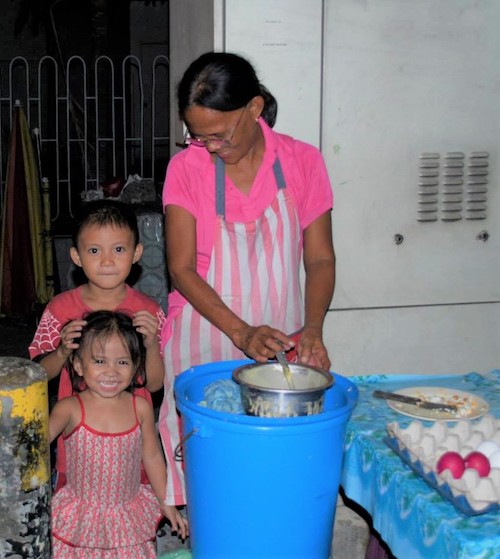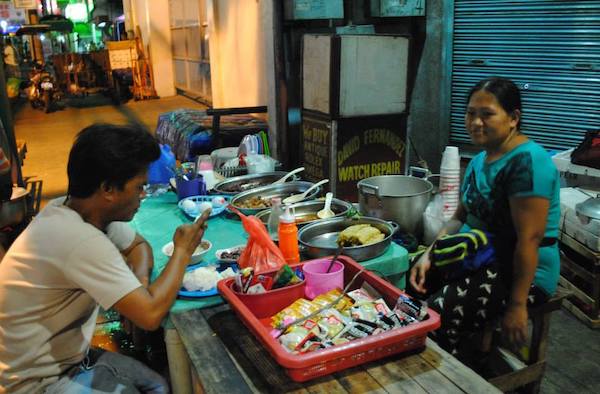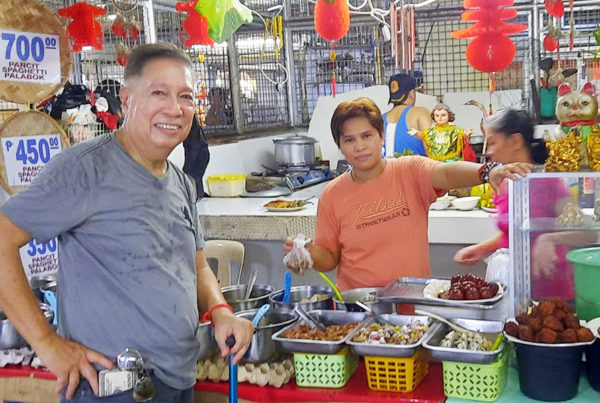Women warriors

By Rex Catubig
March is Women’s History Month. This year’s theme is “Women Providing Healing, Promoting Hope”, in reference to the “ceaseless work of caregivers and frontline workers” during the ongoing pandemic. More, it is “a recognition of the thousands of ways that women of all cultures have provided both healing and hope throughout history”
These women I write about are neither medical workers nor women of influence. They are ordinary homemakers, who have not made a dent in history. Whose contribution to hope and healing is merely to go about their daily task of eking a living so that their family will survive day by day. It is a struggle that knows no name, a hope that has no face.
They make their living under the cover of night. They set off towards sunset–just as others are heading home, they’re just about to embark on a routine solitary journey to earn their day’s keep. But they don’t wear lipstick nor brush on make-up or slip into some slinky dress. They don’t slither seductively into some dim-lit club with loud karaoke music.
Instead, they cross the river from Pantal, carrying an army provision of pots, pans, plates, plastic tubs and other paraphernalia. Thus fortified for the night outing, they seek out and stake their territorial claim on their respective battleground.
Aling Mely holds court amid a setting of fire, heat and smoke–just off the uglified Post Office which probably deserves further desecration (or consecration?). With a tubful of specially prepared batter, she pours the mix which she garnishes with chopped salted egg into a row of round clay molds lined with round-cut banana leaves and fired on top and on the bottom with burning coconut shells. She does this with delicate ease and speed and within minutes, her special Bibingka priced at Twelve and Fifteen pesos, are ready to be brushed with margarine and brown bagged.

She’s now 59 and she confides that she’s been doing this for the past 13 years. Her Bibingka draws a long line of buyers, some coming in handsome cars and buying in bulk (as if preparing for an impending apocalypse). The night we ordered a couple, there was an earlier order of 14 pieces that she was busy filling up and we were third in line. Yet she claims a night’s sell from two plastic tubs of mix is just enough to keep the family from going hungry. With seven children and a couple of grandkids to feed, she seems bound to the fire and smoke of living. But behind the smoke, she and her grandkids, have only the sweetest smiles to while away the long hot night.

Sabel, for her part, chooses to set up her Pakanan–a street version of fast-food, further down the main street, in front of a store that is already closed for the night, and just slightly across the CSI Square. In a departure from the carinderia-caldero-caserola style, she serves her dinner menu in stainless steel oblong chafing dishes or what passes for it. Her food looks yummy and I’d bet lovingly prepared. Rice is Fifteen pesos and viand is Twenty five. But she claims that the profit earner is the 3 in 1 coffee which tricycle drivers and itinerant vendors gulp down to keep awake for the long haul.
She’s now 39 and and can be a run-in for the Guinness with 13 children–11 of whom are alive. She just had miscarriage for her 13th recently, she intimated. Being the sole breadwinner, her husband is a stay-home espouse who does the baby-sitting, I complimented her for looking un-stressed and unfazed by her responsibility. “Iyelek labat dapat so problema” she philosophized. One has to smile off one’s problems. And she broke into a girlish giggle.
After my chat with these two wonderful women, I wanted to walk some more, and get to know more of their kind. Women who have taken on the sisyphean job of keeping body and soul together and remaining un-frustrated and undefeated. I wanted to know where they derive their nonchalant albeit arrogant stance in the face of hardship and life’s cruel vagaries. But it was getting late and I had to take a jeepney ride back to where I was lodged. I caught a Bonuan jeep after several minutes of wait. “Iner kayo? Last trip ko la ya”, the driver made it clear. “Where will you get off? This is my last trip for the night”.
I hopped on in the back: “Niyay bayar ko– senyor”, ” Here’s my senior fare”, I proclaimed, handing the driver Seven pesos in coins. And the traffic-scarred jeepney snaked its way through the maze of the night market along Galvan street.
As we got out of this produce jungle and sped across the now dark and desolate streets, the driver’s words ricocheted in my head: “Last trip ko la ya”. I figured I was glad to hear that. I thought it made sense and I felt reassured. After all the hustle and bustle, things come to a halt. At the end of the day, there is a stop to the daily grind. It’s a time when one can pause and think of Aling Mely and Sabel, reflect on their nightly struggle–to take on life on their own terms. Ruminating thus, we are emboldened to nurture and validate the recalcitrant notion that we can do it.
At the end of the day, there is hope and healing.
Share your Comments or Reactions
Powered by Facebook Comments











